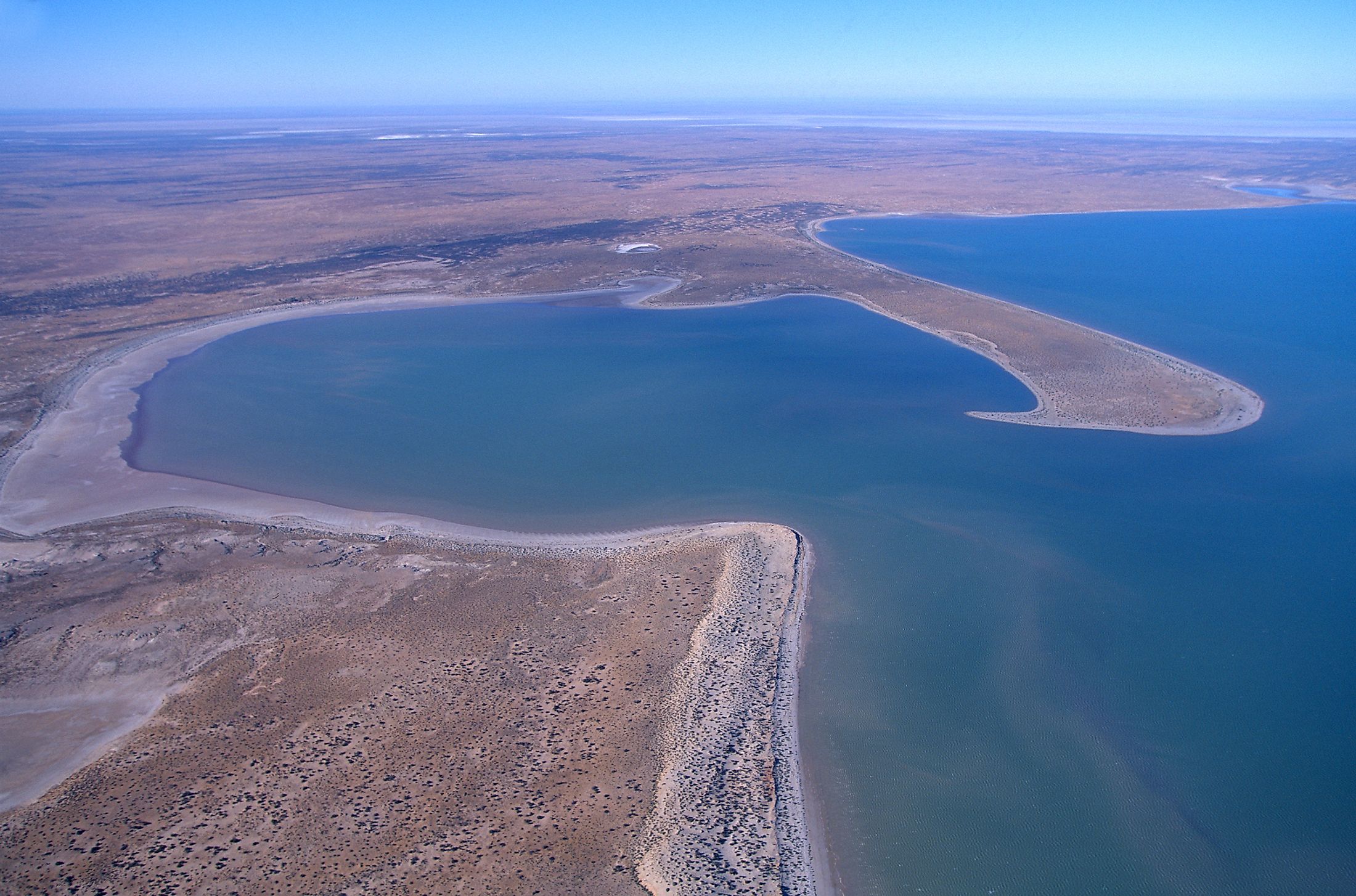
Lake Eyre
The enigmatic turquoise Lake Eyre looks like something out of a fairytale—or, at least, a body of water you would find in a mysterious location. Officially known as Kati Thanda-Lake Eyre, this endorheic lake flows in the Far North region of South Australia. The water forms part of the vast Lake Eyre basin and holds the lowest natural point on the Australian continent. An Aboriginal Dreamstime legend says that the skin of a slain kangaroo formed Lake Eyre. When the skin was spread over a stretch of desert, it magically expanded and filled with water. Tales like these and the splendor of the lake continue to captivate the imagination of explorers, scientists, and everyday tourists.
Geography Of Lake Eyre
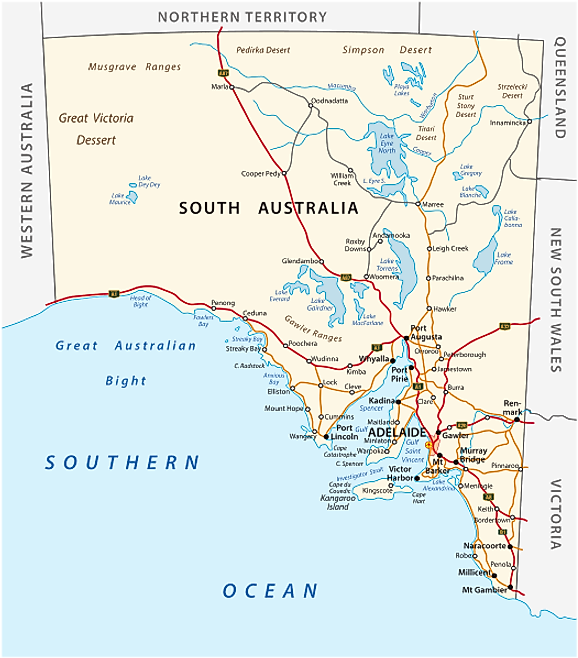
Lake Eyre is as unique as it is gorgeous. It is Australia's largest lake, covering an area of around 9,500 square kilometers in the Central Desert, and also one of the world's largest salt lakes. The lake is often split into two parts: Lake Eyre North and Lake Eyre South, with the barrier being the Goyder Channel. Despite its vast size, the lake is surprisingly shallow, averaging a depth of 1-2 meters.
A salt pan fills the Lake Eyre basin's lower part. But even so, during dry seasons, there is still water in the lake. Kati Thanda-Lake Eyre formed via aeolian processes due to tectonic upwarping in the south after the end of the Pleistocene epoch. When the rainy season starts, the rivers from the northeast end of the basin in outback Queensland start flowing towards Lake Eyre. The monsoon, or seasonally reversing wind, determines how much water reaches the lake and how deep it will run.
Geology of Lake Eyre
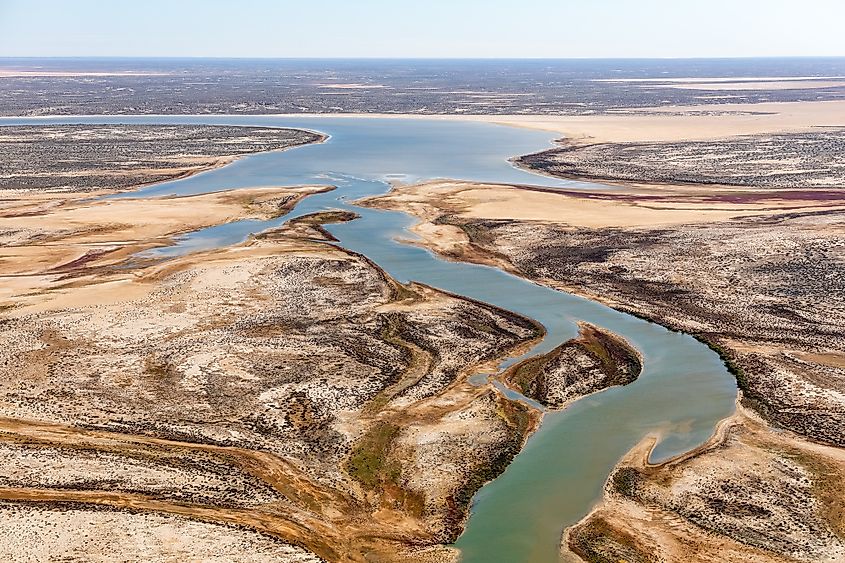
Lake Eyre's geology provides a glimpse of Australia's ancient landscapes. The lake lies within a tectonic depression that formed over millions of years. The basin that holds Lake Eyre is said to have formed during the down-warping of Earth's crust. As time passed, sediments carried by other rivers and strong winds settled in the basin. This accumulation of sedimentary deposits created the foundation of the basin. The salt crust, an identifying feature of Lake Eyre, is the result of ancient seawater evaporation and the leftover salt concentration. In modern times, the water still evaporates, leaving behind a thick crust of salt, which shapes the salt-flat landscape.
Lake Eyre Climate
The area around Lake Eyre receives an average of 100 to 150 millimeters of rain every year, which makes it one of Australia's most arid regions. The lake itself only fills to the brim a few times per century, and when it does, it is the largest lake on the continent. However, because this happens so infrequently, it remains a vast salt flat most of the time. When rare flooding occurs, it is typically due to monsoon rains.
The climate patterns in the basin are influenced by the mainland, the surrounding mountains, and the lake's proximity to the sea. The area experiences hot, dry summers and mild winters. The variation in rainfall is significant because it causes years of drought, which nearly dries up the lake, or leads to flooding, which sees a massive rise in water levels.
Lake Eyre Wildlife
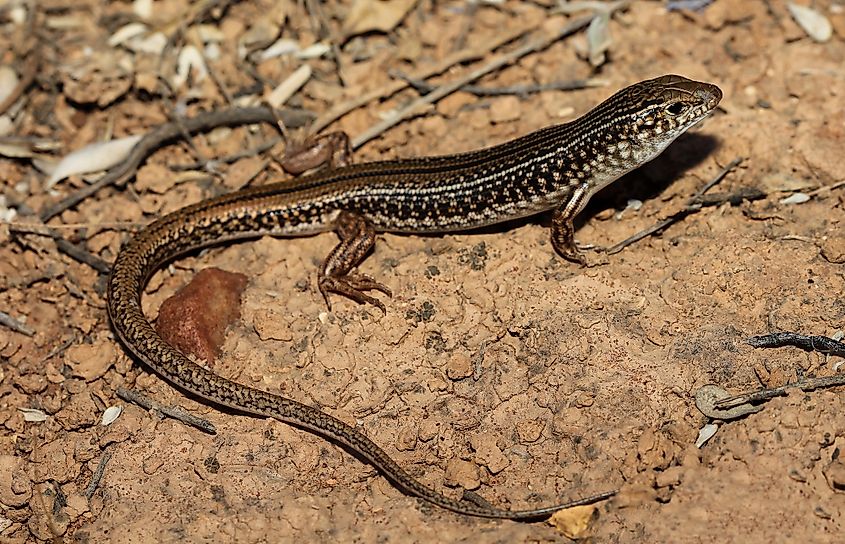
Despite the hot and harsh conditions of this desert landscape, the lake and its surroundings house a stunning variety of wildlife. When the water rises, it attracts gorgeous bird species like terns, gulls, and large pelicans. This is because the fish population in the lake booms during high water levels, providing food for the birds. The birds also make a home in the basin during their breeding season. Moreover, the desert is home to the Lake Eyre dragon lizard and various plants that can withstand the high salt concentrations.
Lake Eyre History
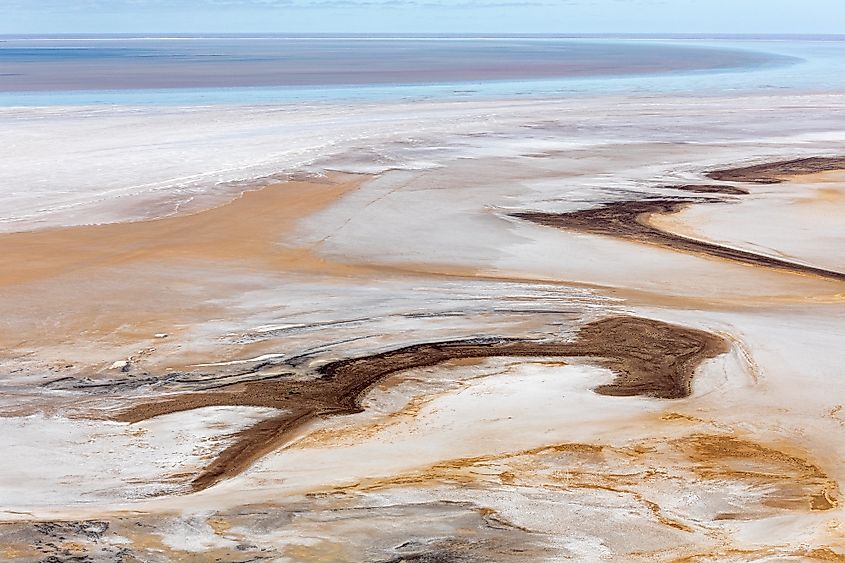
The Lake Eyre basin has been home to the indigenous Arabana people for thousands of years. The lake, in particular, holds a significant cultural importance for them. The first European to discover Lake Eyre was English explorer Edward John Eyre, after whom the lake was named. Ever since its European discovery, the lake has been the subject of several scientific and exploratory expeditions.
Lake Eyre Today

As expected, Lake Eyre is a popular tourist destination, with its popularity skyrocketing during the flood years. The paradox of shimmering, dry salt flats and deep blue water offers a feast for the eyes and the soul. The Lake Eyre Basin Agreement saw the light in the early 2000s to protect this natural wonder and ensure the sustainable management of its water resources. This agreement will ensure that future generations enjoy this temperamental wonder that beautifies the Australian landscape.











